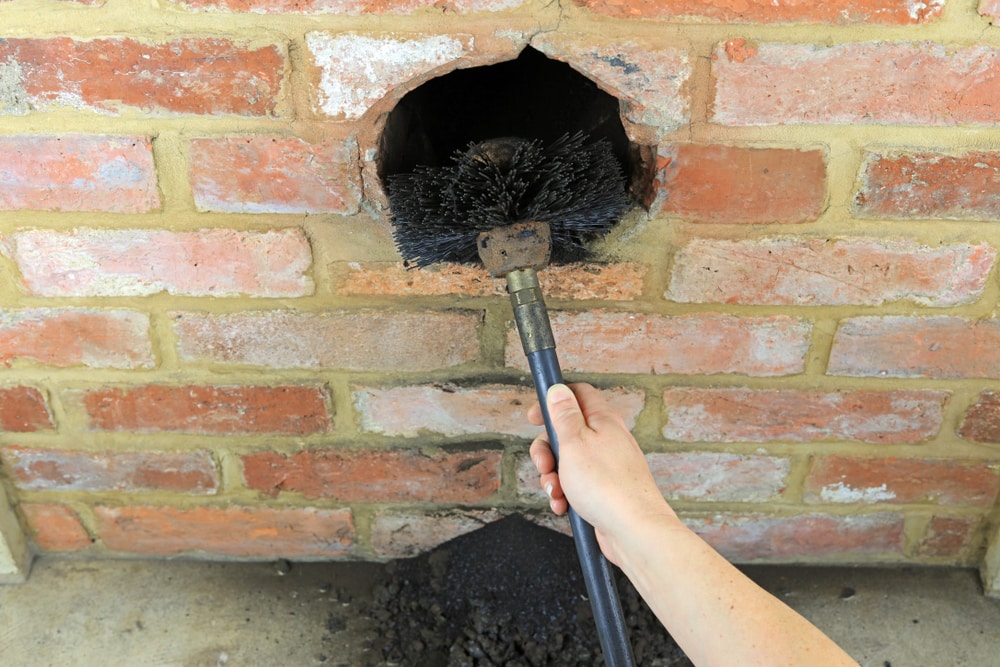Expert Tips for Effective Smokeshaft Maintenance You Need to Know
Smokeshafts offer as important components in numerous homes, providing heat and convenience. From the importance of normal evaluations to safe functional methods, a detailed strategy to smokeshaft maintenance is essential.
Significance of Regular Assessments
Routine inspections of chimneys are vital for ensuring their security and functionality. Chimneys play an essential role in venting out harmful gases and maintaining correct air flow in a home. With time, creosote accumulation, debris, and architectural damage can take place within the smokeshaft, positioning significant dangers such as chimney fires or carbon monoxide leaks.
Throughout a chimney inspection, trained professionals evaluate the problem of the chimney, trying to find any signs of damages, blockages, or degeneration. They additionally examine the stability of the flue, chimney lining, and chimney cap to make certain every little thing remains in correct working order. By determining and resolving issues early, expensive repair work or possible threats can be avoided.
Regular assessments not only help in maintaining the safety and security of the chimney but additionally add to its total efficiency. A properly maintained and clean smokeshaft runs much more properly, guaranteeing appropriate ventilation and reducing the threat of interior air pollution. For that reason, scheduling yearly smokeshaft evaluations is a proactive step that home owners can require to shield their home and liked ones.
Cleaning Strategies and Regularity
Maintaining the safety and performance of a chimney involves not only regular assessments yet also executing suitable cleansing techniques and establishing the ideal frequency for cleaning. Smokeshafts must be cleaned by a specialist chimney sweeper at the very least yearly, even if they are not frequently used. Nonetheless, if the chimney is made use of on a regular basis, especially with wood-burning stoves or fire places, it may need more frequent cleanings to avoid the accumulation of creosote, a very combustible compound that can result in chimney fires.
The cleansing procedure commonly entails eliminating creosote, soot, and particles from the chimney flue, smoke chamber, and firebox. Professional chimney sweeper use specialized brushes, vacuums, and tools to guarantee thorough cleansing without creating a mess in the home. Additionally, they examine the chimney's framework for any signs of damage or wear that may require fixings. House owners need to never ever overlook chimney cleansing, as it is vital for maintaining a functional and risk-free smokeshaft system - Chimney Maintenance San Jose. Regular cleanings not only minimize the risk of chimney fires however likewise improve the smokeshaft's general efficiency and long life.
Addressing Chimney Leaks

When dealing with chimney leaks, extensive inspection and timely repairs are critical to protect against water damages and maintain the architectural honesty of the smokeshaft. Leakages in a smokeshaft can lead to major issues such you can find out more as mold growth, wear and tear of the chimney framework, and even potential fire risks. To properly deal with smokeshaft leaks, start by evaluating the chimney cap, crown, flashing, and masonry for any kind of indicators of damages or wear.
Comprehending Creosote Accumulation
To understand the prospective risks of creosote build-up in smokeshafts, it is necessary to acknowledge its formation process and effect on chimney performance. When timber or fossil gas are melted, Creosote is a black or brownish tar-like material that gathers inside smokeshaft systems. As smoke climbs with the chimney, it condenses and cools, resulting in the formation of creosote, which complies with the chimney wall surfaces.

Routine chimney evaluations and cleanings by an expert smokeshaft sweep are crucial in avoiding creosote accumulation and ensuring the safe operation of your smokeshaft system.
Safe Operation Practices
Implementing appropriate security methods is crucial for the protected and effective operation of chimney systems. Constantly ensure that the smokeshaft is professionally evaluated and cleaned frequently to get rid of any kind of creosote accumulation, which can lead to chimney fires.
In addition, make certain to only burn skilled wood in your fire place, as green or wet wood can produce even more creosote and create hazardous smokeshaft blockages. Never leave a fire unattended and always make sure the fire is totally snuffed out prior to going to her response bed or leaving the house. By following these risk-free operation methods, you can take pleasure in a cozy and comfortable fire while guaranteeing the security of your home and liked ones.
Verdict
To conclude, keeping your chimney is vital for guaranteeing its security and efficiency. Normal assessments, correct cleansing strategies, attending to leaks, handling creosote accumulation, and following risk-free procedure techniques are vital elements of smokeshaft upkeep. By remaining on top of these tasks, you can protect against possible hazards and extend the lifespan of your smokeshaft. It is necessary to focus on chimney upkeep to maintain your home risk-free and warm throughout the cooler months.
Over time, creosote build-up, debris, and structural damage can happen within the chimney, posing severe threats such as smokeshaft fires or carbon monoxide leakages.
If the chimney is utilized regularly, especially with wood-burning ranges or fireplaces, it may linked here need even more frequent cleansings to prevent the buildup of creosote, a highly combustible substance that can lead to smokeshaft fires. (Chimney Maintenance San Jose)
To recognize the possible dangers of creosote build-up in smokeshafts, it is necessary to acknowledge its development procedure and influence on chimney efficiency. As smoke climbs with the chimney, it condenses and cools down, leading to the formation of creosote, which adheres to the smokeshaft walls.
Always ensure that the chimney is skillfully inspected and cleaned on a regular basis to remove any kind of creosote buildup, which can lead to smokeshaft fires.